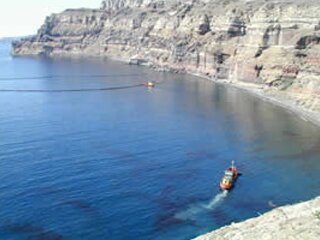SEA DIAMOND 3 years on... Dealing with continual leakage from sunken wrecks (2010)
22 May 2014

Paper presented at the First Adriatic oil Spill Conference, 14 May 2010
In April, 2007 the cruise ship SEA DIAMOND ran aground and sank off the Greek island of Santorini. Once it disappeared from the sea surface, the vessel sank very quickly to the deep sea bed. The result was a substantial, instantaneous spill of fuel oil as the vessel's partially-loaded fuel tanks imploded under the quick pressure change. The cruise ship capsized as it sank and then hit the sea bed relatively hard, rolling back onto its hull in a nearly upright position. This resulted in significant internal and some structural damage to the vessel. Oil spread through the ruined decks, cabins, and internal debris. More than half of the fuel reserves (approximately 300 MT) were observed to have risen from the wreck within the first days and weeks. These were collected at sea and on the shore within the first 2-3 months. Throughout this clean-up operation the release slowed and changed form: the lube oil content in the release diminished, followed by the diesel oil. As the 3 months of active clean-up operations drew to completion in mid-summer 2007, the release of heavy fuel oil did not, however, cease. The 'tail-end' of the instantaneous release turned out to be a small and unfortunate continual release. Neither at that time, nor now, nearly 3 years on, has it been possible to predict just when this release will stop.
In light of this situation, a sophisticated anchoring system was put in place and an enclosure of high-seas quality boom was installed above the deep, yet near-shore wreck. Then, in the summer of 2009 an ROV-based bunker removal operation was undertaken which succeeded in draining another 150+ MT of fuel oil from several natural collection points in the wreck. As of the spring of 2010, the release continues, albeit slowly, and the boom enclosure with its daily maintenance regime remains in place.
The following paper picks up the story, 3 years on, looks at the current situation, compares it in a qualitative way to other cases around the world, and reviews some of the options that have been suggested in different quarters. The scene is set through is a short recap of the response operations and the successes achieved in terms of oil recovered.
Categories: Spill Response, Papers
